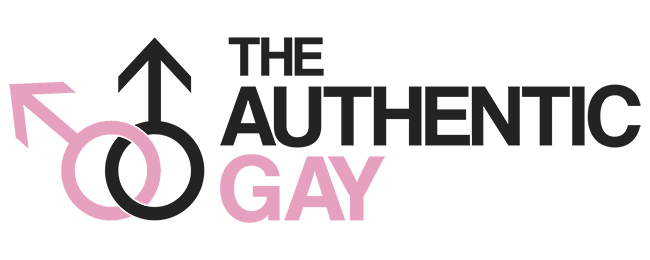What Does Gay Mean? Unpacking the Term’s Past and Present

Gay people frequently face microaggressions daily and need reassurance that they are loved just as they are.
Initially, the term “gay” was used to refer to carefree and lively activities such as skipping down the street or enjoying an exciting dinner party. Recently, however, gay has come to be used as an umbrella term for homosexuality. This guide will explore its true definition and help you understand what gay means in its modern sense.
Gay Definition
Individuals who experience attraction to those of the same gender are often termed “gay.” While this word was once utilized negatively, the LGBTQ+ community has since embraced it, promoting its use in a positive and inclusive manner. Educators and students who identify with the LGBTQ+ spectrum can benefit from understanding its significance and promoting respectful communication.
The term “gay” historically described a cheerful demeanor or vibrant enthusiasm. It was sometimes linked to exuberant lifestyles or a distinct dress sense. Over time, its association shifted towards certain expressions of sexuality, becoming synonymous with specific orientations.
Currently, “gay” encompasses those identifying as lesbian, bisexual, transgender, or queer. While “gay,” “queer,” and “LGBTQ” are all valid descriptors, some might lean towards “queer” due to its broader inclusivity and reduced ties to historical stereotypes. Still, it’s crucial to recognize individual preferences and inquire about one’s chosen terms.
Recognizing that attire or family dynamics don’t determine one’s orientation is key. It’s essential to let individuals express their identity without judgment or assumptions.
If you’re unfamiliar with certain labels related to the LGBTQ+ community, it might be helpful to consult a glossary of terms. Understand that language evolves, so this list isn’t exhaustive but can serve as a foundation.
Sexual orientation is an intrinsic aspect of one’s identity, not a decision or a condition. Those who identify as gay should feel free to express their feelings authentically, deserving the same respect and consideration as anyone else. Everyone has the right to love and be loved without facing bias or intolerance.
Where Did the Term “Gay” Originate From?
Gay is one of the most vibrant words in the English language, having undergone more transformations than Madonna and more dramatic life stories than Liza Minnelli. While today this three-letter word has come to mean homosexuality, its original definition simply implied joy.
The root of the word remains obscure, although its likely source is Old Germanic gauhi, which sounds similar to modern German jah, meaning abrupt, sudden, or steep. From there, it passed into French as gai before eventually arriving in English in the 11th or late 15th centuries as gai (with its French meaning of being cheery or cheerful). These early British residents quickly adopted this newcomer and retained its French meaning of being bright or joyful.
From 1955 on, “gay” slowly transitioned from slang to mainstream usage. By this point, many described people who enjoyed hedonistic lifestyles regardless of gender as gay, but quickly, this word also came to mean sexually uninhibited behavior.
Associating homosexuality with “gay” led many people to feel that its original use had lost its positive associations. Yet, its new usage remained popular, often being applied to both men who identified as openly or implicitly homosexual as well as women wearing revealing clothing and engaging in frivolous activities.
As with its counterpart, straight, “gay” could also be seen as derogatory or offensive; its most prevalent usage today, however, is about same-sex relationships and community involvement—for example, donating to LGBTQ+ charities; saying one is so gay in an expression of joy when attending an event or activity; or using it neutrally, such as saying, “The weather was so gay this afternoon” or “The movie was so gay.” These uses tend to be less frequent.
What “Gay” Really Means Today
Individuals identifying as gay experience attraction towards those of their own gender, which isn’t limited to romantic attraction.
Numerous people identify with various sexual orientations or gender expressions. Some might identify as lesbian, gay, or bisexual, indicating they might be attracted to both genders equally. Historically, since around the 17th century, “gay” has served as a broad term for those identifying with same-sex attractions.
Initially, this descriptor was linked to people who had flamboyant fashion tastes or lived carefree lifestyles. However, its connotation eventually shifted towards its current use related to homosexuality.
In contemporary times, “gay” is generally used positively, but it’s worth noting that some might misuse it with prejudice. Such biases, rooted in homophobia, stem from an aversion to or misunderstanding of those who identify as gay or lesbian.
Every individual deserves equal rights, irrespective of their sexual orientation or gender identity.
Support from family and friends is paramount, especially during pivotal moments like revealing one’s sexual orientation. Demonstrating unwavering love and acceptance, which remain unaffected by gender or sexual preference, is one profound way to show support.
Unfortunately, prejudice and bias towards gay individuals persist in various sectors, including workplaces, educational institutions, social circles, and religious communities. Allies and loved ones should guide them in developing strategies to address and navigate these challenges.
Additionally, it’s crucial to be alert to microaggressions—subtle, often unintentional discriminatory comments or behaviors. From commenting on one’s fluency in English to using derogatory slang, these can be hurtful.
While some might be familiar with terms like gay, queer, and transgender, others might be unaware. Therefore, gaining knowledge about this language is vital to fostering inclusivity and understanding for all identities.
